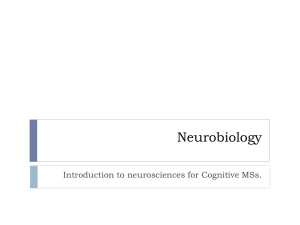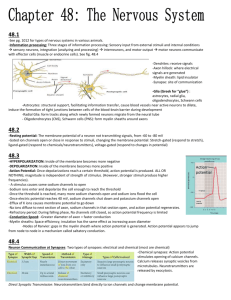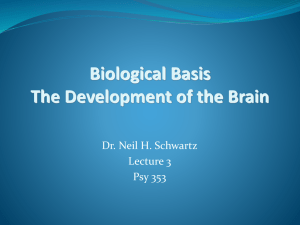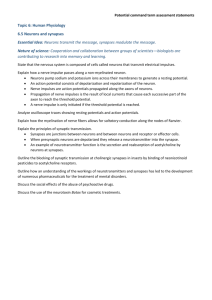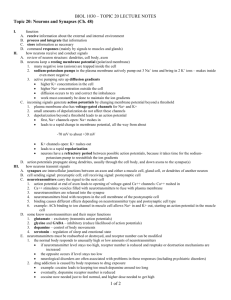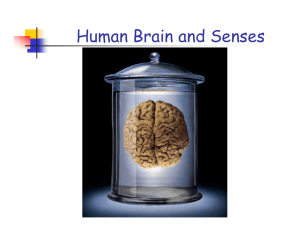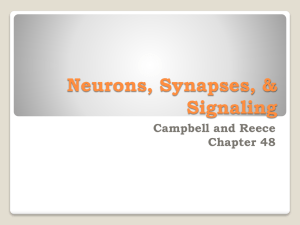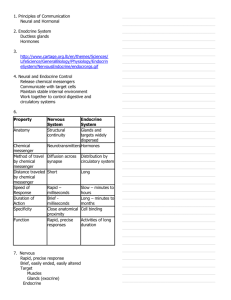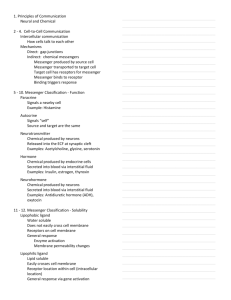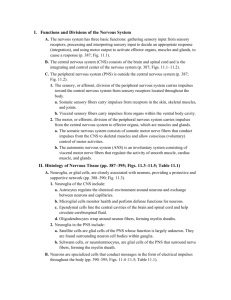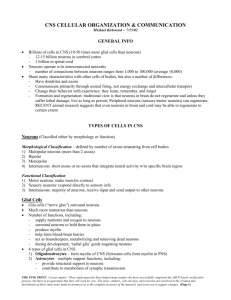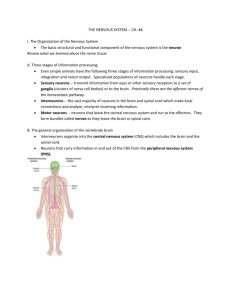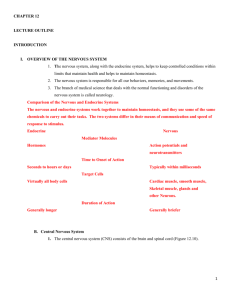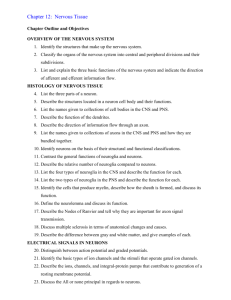Lecture 1 - Personal.kent.edu
advertisement
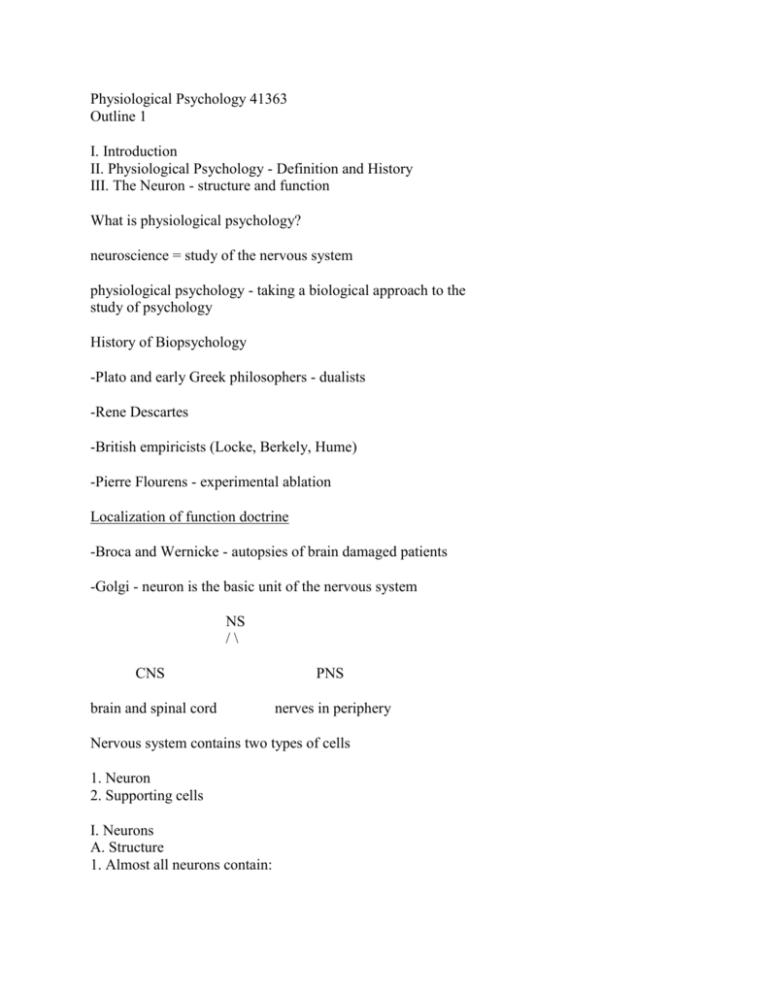
Physiological Psychology 41363 Outline 1 I. Introduction II. Physiological Psychology - Definition and History III. The Neuron - structure and function What is physiological psychology? neuroscience = study of the nervous system physiological psychology - taking a biological approach to the study of psychology History of Biopsychology -Plato and early Greek philosophers - dualists -Rene Descartes -British empiricists (Locke, Berkely, Hume) -Pierre Flourens - experimental ablation Localization of function doctrine -Broca and Wernicke - autopsies of brain damaged patients -Golgi - neuron is the basic unit of the nervous system NS /\ CNS PNS brain and spinal cord nerves in periphery Nervous system contains two types of cells 1. Neuron 2. Supporting cells I. Neurons A. Structure 1. Almost all neurons contain: a. Cell body or soma b. Dendrites c. Axon d. Terminal buttons B. 3 types of neurons based on structure 1. Unipolar 2. Bipolar 3. Multipolar C. 3 types depending on function 1. Sensory 2. Motor both sensory and motor are part of the PNS 3. Interneuron D. Inside neurons 1. membrane 2. cytoplasm 3. nucleus - control center 4. mitochondria - provide cell with energy 5. neurofilaments - support and shape cell 6. microtubules - transport substances from place to place within the cell 7. endoplasmic reticulum 8. Golgi apparatus 9. Lysosomes II. Supporting cells 1. Glial cells - located in the CNS A. Astrocytes - provide physical support: destroy dead neurons (phagocytosis) B. Oligodendrocytes - provide support: produce myelin sheath - insulates and speeds transmission down the axon - nodes of Ranvier 2. Schwann cells - exist only in PNS - also support axons and produce myelin: also aid in digestion of dead axons and arrange themselves to support and guide new growth and regeneration III. Neural Communication 2 types of communication 1. Within neurons 2. Between neurons A. Within neurons - through action potentials (APs) - resting membrane potential is -70mV 2 types of ions: cations (+) and anions (-) 2 forces on ions 1. Diffusion 2. Electrostatic pressure A- membrane impermeable K+ balances: diffusion out, electrostatic in Cl- balances: diffusion in, electrostatic out Na+ diffusion in and electrostatic in Na+K+ pump maintains membrane potential : 3 Na+ out for 2 K+ in Action Potential A. Brief drop in membrane resistance to Na+ B. Characteristics of AP 1. All or none law 2. AP remains constant in size 3. Rate law - differences in strength of muscle contraction not due to differences in size of AP but to differences in rate of firing 4. saltatory conduction in myelinated axons -saves energy -faster B. Between neurons (Synaptic Transmission) 1. neurons communicate with each other through synapses -presynaptic membrane -postsynaptic membrane -synaptic cleft - gap -synaptic vesicles -when depolarize, terminal buttons depolarize, Ca++ channels open and Ca++ rushes in and opens fusion pore. This releases neurotransmitter which travels across synapse and produces IPSP or EPSP -process occurs by two means 1. Direct (Ionotropic) 2. Indirect (Metabotropic) How do we get rid of excess neurotransmitter? 1. reuptake - presynaptic takes it back 2. enzymatic deactivation - enzymes destroy neurotransmitter






